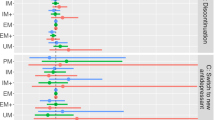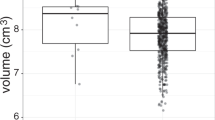Abstract
Drug-metabolizing cytochrome P450 (CYPs) enzymes are expressed in the liver, as well as in extrahepatic tissues such as the brain. Here we show for the first time that drug metabolism by a CYP within the brain, illustrated using CYP2B and the anesthetic propofol (2, 6-diisopropylphenol, Diprivan), can meaningfully alter the pharmacological response to a CNS acting drug. CYP2B is expressed in the brains of animals and humans, and this CYP isoform is able to metabolize centrally acting substrates such as propofol, ecstasy, and serotonin. Rats were given intracerebroventricularly (i.c.v.) injections of vehicle, C8-xanthate, or 8-methoxypsoralen (CYP2B mechanism-based inhibitors) and then tested for sleep time following propofol (80 mg/kg intraperitoneally). Both inhibitors significantly increased sleep-time (1.8- to 2-fold) and brain propofol levels, while having no effect on plasma propofol levels. Seven days of nicotine treatment can induce the expression of brain, but not hepatic, CYP2B, and this induction reduced propofol sleep times by 2.5-fold. This reduction was reversed in a dose-dependent manner by i.c.v. injections of inhibitor. Sleep times correlated with brain (r=0.76, P=0.0009), but not plasma (r=0.24, P=0.39) propofol concentrations. Inhibitor treatments increased brain, but not plasma, propofol levels, and had no effect on hepatic enzyme activity. These data indicate that brain CYP2B can metabolize neuroactive substrates (eg, propofol) and can alter their pharmacological response. This has wider implications for localized CYP-mediated metabolism of drugs, neurotransmitters, and neurotoxins within the brain by this highly variable enzyme family and other CYP subfamilies expressed in the brain.
Similar content being viewed by others
Log in or create a free account to read this content
Gain free access to this article, as well as selected content from this journal and more on nature.com
or
References
Albores A, Ortega-Mantilla G, Sierra-Santoyo A, Cebrian ME, Munoz-Sanchez JL, Calderon-Salinas JV et al (2001). Cytochrome P450 2B (CYP2B)-mediated activation of methyl-parathion in rat brain extracts. Toxicol Lett 124: 1–10.
Altomare C, Trapani G, Latrofa A, Serra M, Sanna E, Biggio G et al (2003). Highly water-soluble derivatives of the anesthetic agent propofol: in vitro and in vivo evaluation of cyclic amino acid esters. Eur J Pharm Sci 20: 17–26.
Bhargava VK, Saha L (2001). Cholinergic mechanism in imipramine and morphine antinoception. Boll Chim Farm 140: 201–204.
Bijl MJ, Luijendijk HJ, van den Berg JF, Visser LE, van Schaik RH, Hofman A et al (2009). Association between the CYP2D6*4 polymorphism and depression or anxiety in the elderly. Pharmacogenomics 10: 541–547.
Bromek E, Haduch A, Daniel WA (2010). The ability of cytochrome P450 2D isoforms to synthesize dopamine in the brain: an in vitro study. Eur J Pharmacol 626: 171–178.
Cavazzuti M, Porro CA, Barbieri A, Galetti A (1991). Brain and spinal cord metabolic activity during propofol anaesthesia. Br J Anaesth 66: 490–495.
Challet E, Gourmelen S, Pevet P, Oberling P, Pain L (2007). Reciprocal relationships between general (propofol) anesthesia and circadian time in rats. Neuropsychopharmacology 32: 728–735.
Chimbira W, Sweeney BP (2000). The effect of smoking on postoperative nausea and vomiting. Anaesthesia 55: 540–544.
Clarke PB, Chaudieu I, el-Bizri H, Boksa P, Quik M, Esplin BA et al (1994). The pharmacology of the nicotinic antagonist, chlorisondamine, investigated in rat brain and autonomic ganglion. Br J Pharmacol 111: 397–405.
Court MH, Duan SX, Hesse LM, Venkatakrishnan K, Greenblatt DJ (2001). Cytochrome P-450 2B6 is responsible for interindividual variability of propofol hydroxylation by human liver microsomes. Anesthesiology 94: 110–119.
Dam M, Ori C, Pizzolato G, Ricchieri GL, Pellegrini A, Giron GP et al (1990). The effects of propofol anesthesia on local cerebral glucose utilization in the rat. Anesthesiology 73: 499–505.
Ekins S, Iyer M, Krasowski MD, Kharasch ED (2008). Molecular characterization of CYP2B6 substrates. Curr Drug Metab 9: 363–373.
Fassoulaki A, Farinotti R, Mantz J, Desmonts JM (1994). Does tolerance develop to the anaesthetic effects of propofol in rats? Br J Anaesth 72: 127–128.
Fassoulaki A, Farinotti R, Servin F, Desmonts JM (1993). Chronic alcoholism increases the induction dose of propofol in humans. Anesth Analg 77: 553–556.
Favetta P, Degoute CS, Perdrix JP, Dufresne C, Boulieu R, Guitton J (2002). Propofol metabolites in man following propofol induction and maintenance. Br J Anaesth 88: 653–658.
Fradette C, Yamaguchi N, Du Souich P (2004). 5-Hydroxytryptamine is biotransformed by CYP2C9, 2C19 and 2B6 to hydroxylamine, which is converted into nitric oxide. Br J Pharmacol 141: 407–414.
Gervasini G, Carrillo JA, Benitez J (2004). Potential role of cerebral cytochrome P450 in clinical pharmacokinetics: modulation by endogenous compounds. Clin Pharmacokinet 43: 693–706.
Iohom G, Ni Chonghaile M, O′Brien JK, Cunningham AJ, Fitzgerald DF, Shields DC (2007). An investigation of potential genetic determinants of propofol requirements and recovery from anaesthesia. Eur J Anaesthesiol 24: 912–919.
Kanto J, Gepts E (1989). Pharmacokinetic implications for the clinical use of propofol. Clin Pharmacokinet 17: 308–326.
Khokhar JY, Miksys SL, Tyndale RF (2010). Rat brain CYP2B induction by nicotine is persistent and does not involve nicotinic acetylcholine receptors. Brain Res 1348: 1–9.
Kirchheiner J, Seeringer A, Godoy AL, Ohmle B, Maier C, Beschoner P et al (2010). CYP2D6 in the brain: genotype effects on resting brain perfusion. Mol Psychiatry (e-pub ahead of print 6 April 2010; doi:10.138/mp.2010.42).
Koenigs LL, Trager WF (1998). Mechanism-based inactivation of cytochrome P450 2B1 by 8-methoxypsoralen and several other furanocoumarins. Biochemistry 37: 13184–13193.
Langley MS, Heel RC (1988). Propofol. A review of its pharmacodynamic and pharmacokinetic properties and use as an intravenous anaesthetic. Drugs 35: 334–372.
Le Guellec C, Lacarelle B, Villard PH, Point H, Catalin J, Durand A (1995). Glucuronidation of propofol in microsomal fractions from various tissues and species including humans: effect of different drugs. Anesth Analg 81: 855–861.
Lewis D (1996). Cytochromes P450. Structure, Function and Mechanism. Taylor & Francis: Bristol. pp 122–123.
Liu SH, Wei W, Ding GN, Ke JD, Hong FX, Tian M (2009). Relationship between depth of anesthesia and effect–site concentration of propofol during induction with the target-controlled infusion technique in elderly patients. Chin Med J (Engl) 122: 935–940.
Ludbrook GL, Upton RN, Grant C, Gray EC (1996). Brain and blood concentrations of propofol after rapid intravenous injection in sheep, and their relationships to cerebral effects. Anaesth Intens Care 24: 445–452.
Lukas G, Brindle SD, Greengard P (1971). The route of absorption of intraperitoneally administered compounds. J Pharmacol Exp Ther 178: 562–564.
Lysakowski C, Dumont L, Czarnetzki C, Bertrand D, Tassonyi E, Tramer MR (2006). The effect of cigarette smoking on the hypnotic efficacy of propofol. Anaesthesia 61: 826–831.
Mann A, Tyndale RF (2010). Cytochrome P450 2D6 enzyme neuroprotects against 1-methyl-4-phenylpyridinium toxicity in SH-SY5Y neuronal cells. Eur J Neurosci 31: 1185–1193.
Meyer RP, Gehlhaus M (2010). A role for CYP in the drug–hormone crosstalk of the brain. Expert Opin Drug Metab Toxicol 6: 675–687.
Michels R, Marzuk PM (1993). Progress in psychiatry (1). N Engl J Med 329: 552–560.
Miksys S, Lerman C, Shields PG, Mash DC, Tyndale RF (2003). Smoking, alcoholism and genetic polymorphisms alter CYP2B6 levels in human brain. Neuropharmacology 45: 122–132.
Miksys S, Tyndale RF (2004). The unique regulation of brain cytochrome P450 2 (CYP2) family enzymes by drugs and genetics. Drug Metab Rev 36: 313–333.
Miksys S, Tyndale RF (2009). Brain drug-metabolizing cytochrome P450 enzymes are active in vivo, demonstrated by mechanism-based enzyme inhibition. Neuropsychopharmacology 34: 634–640.
Miksys SL, Tyndale RF (2002). Drug-metabolizing cytochrome P450s in the brain. J Psychiatry Neurosci 27: 406–415.
Nakayama H, Okuda H, Nakashima T, Imaoka S, Funae Y (1993). Nicotine metabolism by rat hepatic cytochrome P450s. Biochem Pharmacol 45: 2554–2556.
Paxinos G, Watson C (1986). The Rat Brain in Stereotaxic Coordinates, 2nd edn. Academic Press: San Diego.
Sebel PS, Lowdon JD (1989). Propofol: a new intravenous anesthetic. Anesthesiology 71: 260–277.
Seno H, He YL, Tashiro C, Ueyama H, Mashimo T (2002). Simple high-performance liquid chromatographic assay of propofol in human and rat plasma and various rat tissues. J Anesth 16: 87–89.
Shyr MH, Tsai TH, Tan PP, Chen CF, Chan SH (1995). Concentration and regional distribution of propofol in brain and spinal cord during propofol anesthesia in the rat. Neurosci Lett 184: 212–215.
Siu EC, Tyndale RF (2008). Selegiline is a mechanism-based inactivator of CYP2A6 inhibiting nicotine metabolism in humans and mice. J Pharmacol Exp Ther 324: 992–999.
Strobel HW, Thompson CM, Antonovic L (2001). Cytochromes P450 in brain: function and significance. Curr Drug Metab 2: 199–214.
Tassonyi E, Charpantier E, Muller D, Dumont L, Bertrand D (2002). The role of nicotinic acetylcholine receptors in the mechanisms of anesthesia. Brain Res Bull 57: 133–150.
Upadhya SC, Chinta SJ, Pai HV, Boyd MR, Ravindranath V (2002). Toxicological consequences of differential regulation of cytochrome p450 isoforms in rat brain regions by phenobarbital. Arch Biochem Biophys 399: 56–65.
Vallejo YF, Buisson B, Bertrand D, Green WN (2005). Chronic nicotine exposure upregulates nicotinic receptors by a novel mechanism. J Neurosci 25: 5563–5572.
Yanev S, Kent UM, Pandova B, Hollenberg PF (1999). Selective mechanism-based inactivation of cytochromes P-450 2B1 and P-450 2B6 by a series of xanthates. Drug Metab Dispos 27: 600–604.
Yanev SG, Kent UM, Roberts ES, Ballou DP, Hollenberg PF (2000). Mechanistic studies of cytochrome P450 2B1 inactivation by xanthates. Arch Biochem Biophys 378: 157–166.
Acknowledgements
We would like to thank Drs Philip G Williams, Hiromi Morimoto, and William F Trager for generously providing us the radiolabeled 8-methoxypsoralen and Dr Howard Kaplan for his statistical guidance. We would also like to thank Fariba Baghai Wadji and Dr Bin Zhao for their technical assistance and Dr Sharon Miksys for her scientific consultation. This work was funded by the Centre for Addiction and Mental Health, CIHR MOP 97751, and a Canada Research Chair to Rachel F Tyndale.
Author information
Authors and Affiliations
Corresponding author
Ethics declarations
Competing interests
Dr Rachel F Tyndale is a shareholder in Nicogen Research, a company focused on the development of novel smoking cessation treatment approaches. None of the data contained in this manuscript alters or improves any commercial aspect of Nicogen and no Nicogen funds were used in this work. The manuscript was not reviewed by anyone else associated with Nicogen. Jibran Y Khokhar has no conflict of interest to declare.
Rights and permissions
About this article
Cite this article
Khokhar, J., Tyndale, R. Drug Metabolism within the Brain Changes Drug Response: Selective Manipulation of Brain CYP2B Alters Propofol Effects. Neuropsychopharmacol 36, 692–700 (2011). https://doi.org/10.1038/npp.2010.202
Received:
Revised:
Accepted:
Published:
Issue date:
DOI: https://doi.org/10.1038/npp.2010.202
Keywords
This article is cited by
-
Characterization of the Stereoselective Disposition of Bupropion and Its Metabolites in Rat Plasma and Brain
European Journal of Drug Metabolism and Pharmacokinetics (2023)
-
Drug-Metabolizing Cytochrome P450 Enzymes Have Multifarious Influences on Treatment Outcomes
Clinical Pharmacokinetics (2021)
-
Human CYP2D6 in the Brain Is Protective Against Harmine-Induced Neurotoxicity: Evidence from Humanized CYP2D6 Transgenic Mice
Molecular Neurobiology (2020)
-
The need for mathematical modelling of spatial drug distribution within the brain
Fluids and Barriers of the CNS (2019)
-
Comparison of In Vitro Stereoselective Metabolism of Bupropion in Human, Monkey, Rat, and Mouse Liver Microsomes
European Journal of Drug Metabolism and Pharmacokinetics (2019)



